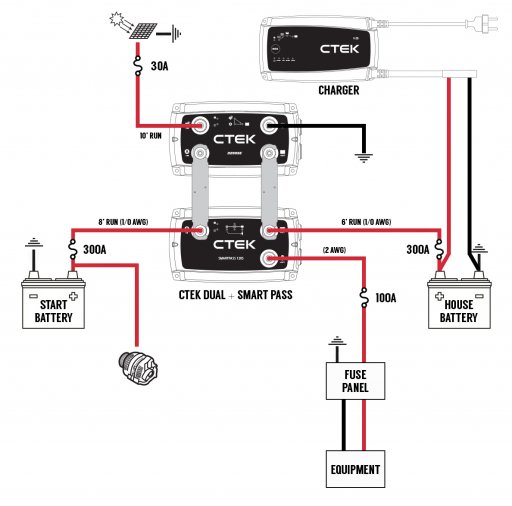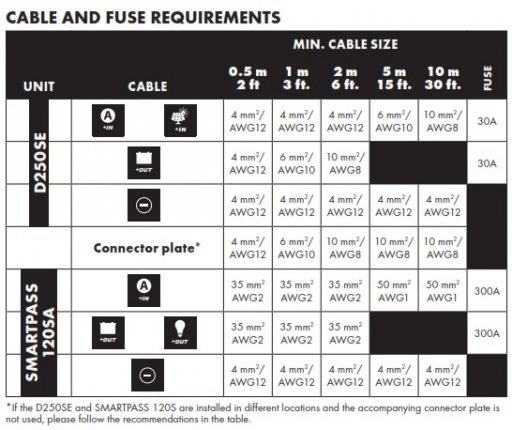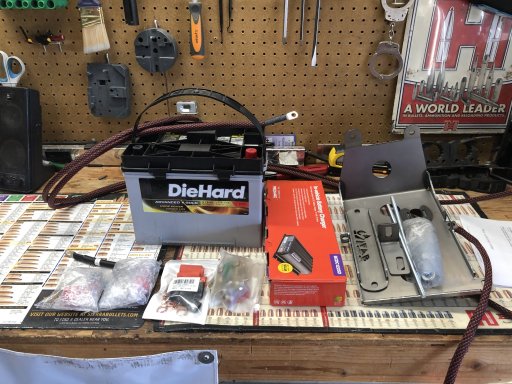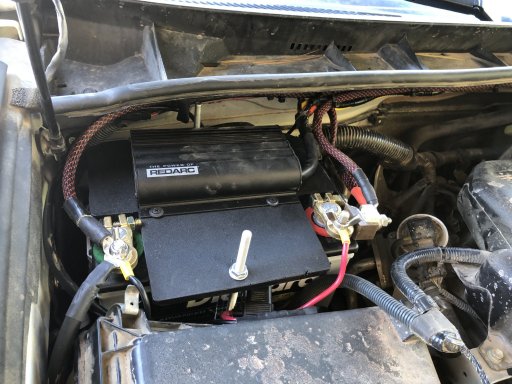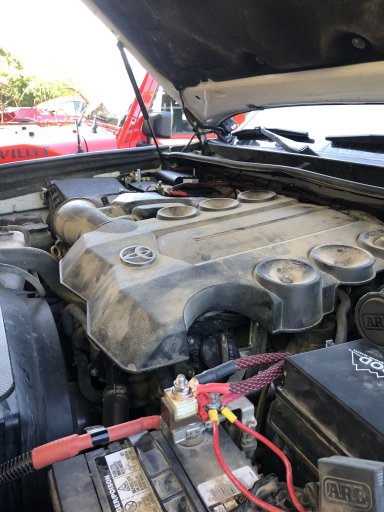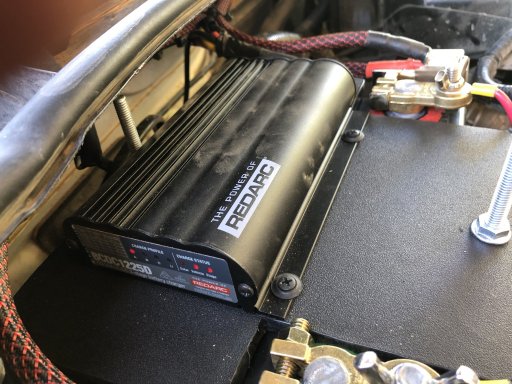I am 100% not an expert on these systems, but I'm eager to hear what others say and appreciate you putting this out there -- I'm just learning for my own build. If I'm understanding the diagram correctly, I don't see anything that immediately jumps out as contrary to what I know -- but again, what I know is that batteries make lights go bright using witchcraft and plastic hoses full of metal (OK, I know a bit more than that, but not nearly as many other gurus here know). The fuses look like they are in the right spots as far as I can tell, though depending on accessories the 300 amps might be higher than I'd be comfortable with. As far as I know, the purpose of those fuses are that if there's a short anywhere, that fuse will blow before a fire starts, so I would size that fuse according to load where possible. My thinking is that I'd rather replace a big fuse 10 times for no reason, than have too big a fuse cause a fire. Obviously there is a balance somewhere, I just don't know where it would be in your application.
I have some questions but they are based in my ignorance, not in any shortcomings I see in your design, and I tend to learn a lot from discussion so I'm hoping you don't mind me picking your brain a bit!
I'm guessing I will answer my own question here, but it looks like you have a CTEK charger for "Shore Power", you have the DC to DC for Solar, and then another unit (Smartpass) to go from Starter to House. I've been under the impression that the DC to DC is all you need to go from Starter to House. Therefore, my question is -- what purpose does the Smartpass serve in this application? Is it because the DC to DC can only have one "input" and that's Solar? Is it not OK to go from Starter & Solar - DC to DC - House Battery - Fuse Panel - Equipment?
Do you plan on having a winch hookup, and if yes, are you going to wire that to your House Battery or your Main Battery? I'm thinking of doing a main battery for my winch, because my house battery will be in the bed of the truck and I don't want a long run of heavy gauge wire to go to the front -- it's a lot of extra wiring weight.
And that prompts my next question. Is there a way for your to mount your batteries and charging system closer together? You've got it spec'd for 14' of pretty heavy gauge wire, and while the heavy gauge is necessary, that's an extra 20-30 lbs (Maybe, I'm not sure how much your particular wire will weigh) that you might not need if you can geographically move them closer.
At any rate, thanks for posting this and for the inevitable information that will hopefully flow from this thread!
